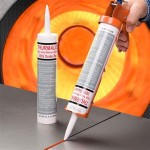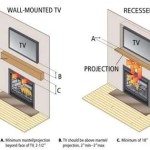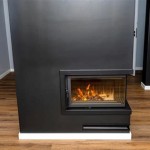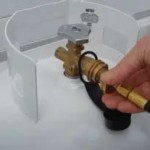How to Paint a Brass Fireplace Cover
Brass fireplace covers, while often aesthetically pleasing in their original state, can become tarnished, outdated, or simply clash with evolving interior design preferences. Painting a brass fireplace cover offers a cost-effective alternative to replacement, allowing for a customized look that complements any room. However, proper preparation and the correct techniques are crucial to achieving a durable and attractive finish. This article provides a comprehensive guide to painting a brass fireplace cover, outlining the necessary steps from initial preparation to the final coat of paint.
Preparing the Brass Fireplace Cover for Painting
The longevity and appearance of the painted finish depend heavily on the quality of preparation. Brass surfaces are typically coated with a clear lacquer to prevent tarnishing. This lacquer, along with any existing rust, dirt, or grease, must be completely removed to ensure proper paint adhesion. Neglecting this step will inevitably lead to peeling, chipping, and an overall unsatisfactory result.
Cleaning:** The initial step is thorough cleaning. Use a degreasing cleaner, such as trisodium phosphate (TSP) solution or a dedicated metal cleaner, to remove any grease, oil, or dirt from the surface. Apply the cleaner according to the manufacturer's instructions, typically involving scrubbing with a non-abrasive pad or brush. Rinse the fireplace cover thoroughly with clean water and allow it to dry completely.
Removing Existing Lacquer:** If the brass fireplace cover has a lacquer coating, this must be removed before priming and painting. There are several methods for lacquer removal:
- Chemical Strippers: Chemical strippers are effective for removing lacquer. Apply the stripper according to the manufacturer's instructions, ensuring adequate ventilation and wearing appropriate protective gear, such as gloves and eye protection. The stripper will soften the lacquer, allowing it to be scraped away with a plastic scraper. Multiple applications may be necessary for thick or stubborn lacquer. After stripping, thoroughly clean the fireplace cover with mineral spirits to remove any residue from the chemical stripper.
- Heat Gun: A heat gun can also be used to soften lacquer. Apply heat evenly over the surface, holding the heat gun a few inches away from the brass. As the lacquer softens, scrape it away with a plastic scraper. Be careful not to overheat the brass, as this can cause discoloration or warping. After removing the lacquer, clean the fireplace cover with mineral spirits.
- Sanding: While not as effective as chemical stripping or a heat gun, sanding can be used to remove lacquer, especially in hard-to-reach areas. Use a fine-grit sandpaper (220-grit or higher) to gently sand the surface, being careful not to scratch the brass. This method is more time-consuming and requires significant effort.
Repairing Surface Imperfections:** Inspect the fireplace cover for any dents, scratches, or other imperfections. Minor scratches can be smoothed out with fine-grit sandpaper. Deeper dents may require the use of metal filler formulated for brass. Apply the filler according to the manufacturer's instructions, allowing it to dry completely before sanding it smooth to match the surrounding surface.
Sanding for Adhesion:** After removing the lacquer and repairing any imperfections, lightly sand the entire surface of the fireplace cover with fine-grit sandpaper (220-grit or higher). This creates a slightly roughened surface, providing a better grip for the primer. After sanding, thoroughly remove any sanding dust with a tack cloth.
Priming for Optimal Paint Adhesion
Priming is a critical step in painting brass, as it provides a uniform surface for the paint to adhere to and prevents the brass from reacting with the paint. It also helps to block any remaining stains or discoloration from bleeding through the finish coat. Selecting the appropriate primer is crucial for achieving a long-lasting and professional-looking result.
Choosing the Right Primer:** The most suitable primer for painting brass is a self-etching primer or a metal primer specifically designed for non-ferrous metals. Self-etching primers contain an acid that etches the metal surface, creating a strong bond between the primer and the brass. Metal primers provide a barrier against rust and corrosion and promote paint adhesion. Avoid using general-purpose primers, as they may not adhere well to brass.
Applying the Primer:** Apply the primer in thin, even coats using a spray can or a brush. If using a spray can, hold the can approximately 8-10 inches away from the surface and apply the primer in a sweeping motion, overlapping each stroke slightly. If using a brush, use a high-quality brush designed for applying primer. Apply the primer in long, even strokes, following the grain of the metal. Avoid applying the primer too thickly, as this can lead to drips and runs.
Drying Time:** Allow the primer to dry completely according to the manufacturer's instructions. This may take several hours or even overnight, depending on the type of primer and the environmental conditions. Do not proceed to the next step until the primer is completely dry.
Sanding the Primer (Optional):** Once the primer is dry, lightly sand it with very fine-grit sandpaper (320-grit or higher) to create an even smoother surface for the paint. This step is optional, but it can improve the final appearance of the painted finish. After sanding, thoroughly remove any sanding dust with a tack cloth.
Painting the Brass Fireplace Cover
After proper preparation and priming, the final step is to apply the paint. Selecting the right paint type and applying it correctly are essential for achieving a durable, attractive, and heat-resistant finish.
Choosing the Right Paint:** For a fireplace cover, select a heat-resistant paint specifically designed for use on metal surfaces. High-temperature paints, often used for automotive or barbecue grills, are capable of withstanding the heat generated by a fireplace. These paints are typically available in spray cans for easy application. Ensure the selected paint is compatible with the primer used.
Applying the Paint:** Apply the paint in thin, even coats, using the same technique as with the primer. If using a spray can, hold the can approximately 8-10 inches away from the surface and apply the paint in a sweeping motion, overlapping each stroke slightly. If using a brush, use a high-quality brush designed for applying paint. Apply the paint in long, even strokes, following the grain of the metal. Avoid applying the paint too thickly, as this can lead to drips and runs. Multiple thin coats are preferable to one thick coat.
Drying Time:** Allow each coat of paint to dry completely according to the manufacturer's instructions before applying the next coat. This may take several hours or even overnight, depending on the type of paint and the environmental conditions. Typically, two to three coats of paint are required to achieve full coverage and a uniform finish.
Curing the Paint:** Some heat-resistant paints require a curing process to achieve their maximum heat resistance. This typically involves gradually heating the painted object in an oven or with a heat gun. Follow the manufacturer's instructions for curing the paint. This step is crucial for ensuring that the paint can withstand the heat generated by the fireplace without blistering or peeling.
Reassembly and Final Inspection:** Once the paint is completely dry and cured (if required), carefully reassemble the fireplace cover, if necessary. Inspect the finished product for any imperfections, such as drips, runs, or uneven coverage. If any imperfections are found, lightly sand the affected areas with very fine-grit sandpaper and apply another thin coat of paint.
By following these steps carefully, one can successfully paint a brass fireplace cover, transforming its appearance and extending its lifespan. The key to a successful paint job lies in meticulous preparation, careful selection of materials, and patient application. Attention to detail in each stage ensures a durable and aesthetically pleasing finish that will enhance the fireplace's appearance for years to come.

Fireplace Door Update With Spray Paint Roots Wings Furniture Llc

How To Paint A Brass Fireplace Screen Addicted 2 Decorating

Fireplace Door Update With Spray Paint Roots Wings Furniture Llc

How To Spray Paint A Brass Fireplace Insert Erfly House

How To Spray Paint A Brass Fireplace Insert Erfly House

How To Spray Paint A Brass Fireplace Bright Green Door

Painted Old Brass Fireplace Cover With Rustoleum High Heat Black Paint Love The New Look Brick Makeover Remodel

How To Paint Metal Fireplace Surround Four Generations One Roof

Painted Fireplace Doors 6 Steps With S Instructables

Brass Fireplace Update East Coast Creative
Related Posts








